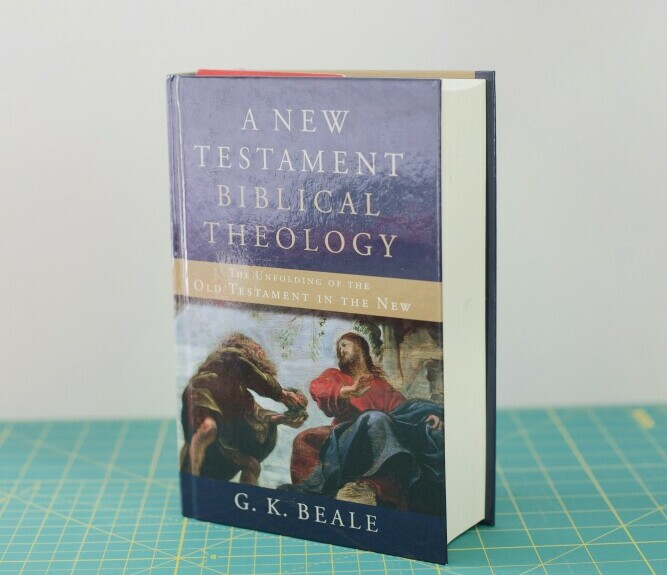Explore the thrilling journey of early Christians in “The Acts of the Apostles,” where faith ignites transformative missions and shapes history.
Understanding The Acts Of The Apostles
The Acts of the Apostles reads like an adventure, full of daring missions and pivotal moments that have left an indelible mark on Christian history. It’s the sequel to the Gospel of Luke, picking up right where the story of Jesus’ earthly ministry left off. In it, the curtain rises to reveal the early disciples, ignited by their faith, turning the ancient world upside down as they spread the message of Christ.
For anyone curious about the origins of Christian practice and belief, Acts is invaluable. It offers a window into how the earliest followers of Jesus lived, how they overcame adversity, and how the Christian movement took shape and expanded beyond Jewish roots to a broader Gentile world. It serves not just as a historical account but as a source of inspiration, showing the transforming power of faith in action.
I’ve prepared this guide to help you unpack the nuances and complexities within Acts. This isn’t just a re-telling of history; it’s a chance to find vibrant lessons for faith communities today and individual believers seeking perspective and purpose reflective of those first Christians.
Unlocking the Historical Tapestry of Acts
When we explore ‘The Acts of the Apostles,’ it’s essential to immerse ourselves in the tapestry of history in which it was woven. This isn’t just about a backdrop; it’s about understanding the societal, political, and religious fabrics that shaped the narrative of Acts and, in turn, early Christianity.
The authorship of Acts is traditionally ascribed to Luke, a companion of the Apostle Paul and also the author of the third Gospel. While modern scholarship does debate this point, the traditional view establishes a continuity between the Gospel of Luke and Acts. This is pivotal because the two texts collectively provide a fuller picture of the beginnings of Christian history, which starts with the life and teachings of Jesus and continues through the growth of the church.
Luke is believed to have composed Acts in the late first century AD, possibly between 80 and 90 CE. The precision of events, cultural details, and descriptions of geographic locations suggest that the writer had a strong familiarity with the first-century Roman Empire. The narrative captures an era of significant transition, where early Christians navigated a complex Roman world, often fraught with challenges and opposition.
The social and religious fabric of the setting in Acts is characterized by a variety of movements, beliefs, and practices. Judaism and the Roman pantheon coexisted with nascent Christianity, which presented a revolutionary message that Jesus was the Christ – a message both compelling and controversial. It’s within this milieu that the apostles began to disseminate the teachings of Jesus, paving the way for a new religious movement that would ultimately become distinct from Judaism.
Shifting to Acts itself, the book functions as a sequel to Luke’s Gospel, one that keeps the spotlight on Jesus’ teachings but extends it to focus on the spread of those teachings through the work of Jesus’ followers. Luke’s Gospel closes with Jesus’ ascension; Acts picks up right there and lays out the ensuing mission of the apostles with a clear trajectory – from Jerusalem to Rome – signifying not just geographic but cultural and religious expansion as well.
With this historical canvas in mind, we’re poised to venture further into the text of Acts. In the next section, we will dissect the structure of the book itself, identifying its key sections and events that map out early Christian triumphs and trials. Harmonizing our understanding of the historical context with the literary structure will enrich our grasp of the internal narrative of Acts and the external forces that influenced its development.
Navigating Acts’ Compelling Structure
The architectural beauty of Acts lies in its well-defined structure, which mirrors the growing complexity of the early Christian church. Understanding this structure is like reading a map; it helps us navigate the narrative’s terrain and appreciate how different parts contribute to the whole.
Divided into clear segments, Acts first spotlights the fledgling Jerusalem church post-Pentecost, moves through the seismic shift from a predominately Jewish to a Gentile fellowship, and culminates with Paul’s indefatigable missionary endeavors.
Indeed, these sections are more than mere chapters; they host a variety of major themes. The phenomena of speaking in tongues, prophetic fulfillment, and divine intervention punctuate the text, signaling a new era unfolding within God’s plan. The motif of journey is also significant, as it symbolizes not just geographical expansion but spiritual pilgrimage.
If Acts’ unfolding drama were to be examined through a lens, key events would stand out. The Day of Pentecost reveals the advent of the Holy Spirit, setting the nascent church ablaze with purpose and direction. Stephen’s martyrdom acts as a crucial pivot that propels the gospel beyond ethnic borders. And certainly, the Council at Jerusalem presents an early testament to collective governance in matters of faith.
As we transition seamlessly into the realm of the apostles and disciples, we prepare to encounter individuals who took the charge of Acts’ central message – the spread of the Good News – and ran with it, often quite literally, across the Roman world.
Championing the Pillars: Key Characters of Acts
When you flip through the pages of Acts, you’ll meet a cast of characters that are pivotal to the church’s burgeoning narrative. Central to this unfolding drama are the apostles, notably Peter and Paul, whose leadership and teachings helped lay the very foundation of Christian doctrine and practice.
Peter, the once-simple fisherman, transformed into a foundational rock for the young church. His bold proclamations and miraculous deeds, as recorded in Acts, serve as enduring testimony of his faith and leadership. I’ll take you through Peter’s journey—from addressing the crowds at Pentecost to his pivotal role in welcoming Gentile believers.
And then there’s Paul, a man whose 180-degree turn is nothing short of astounding. We remember him first as Saul, the fierce persecutor of Christians, but post-conversion, he emerges as a tireless missionary. My discussion will walk you through Paul’s extensive travels, his strategic approach to evangelism, and the theological depth of his teachings that continue to resonate today.
Yet it’s not just the apostles who shine. Disciples like Stephen, with his spirit-filled oratory that led to his martyrdom, and Philip, the evangelist whose mission reached an Ethiopian official, play crucial roles in the spread of the Gospel. The unity and diversity of these characters underscore a powerful message: the body of Christ is multifaceted yet singular in purpose.
As compelling as the apostles and disciples are, they were not the only ones who steered the course of early Christianity. The book of Acts also introduces us to a variety of individuals who encountered the apostles. From Lydia, a businesswoman who provided support to Paul’s ministry, to Cornelius, the Roman centurion whose conversion marked a significant turning point for Gentile inclusion in the church, these encounters reveal the gospel’s reach and its power to transcend cultural and societal barriers.
Straightforwardly put, the characters in Acts are not mere historical figures; they’re symbols of faith, perseverance, and transformation. Each narrative offers insight into the human condition and God’s interaction with those willing to follow Him.
This rich tapestry of personalities sets the stage for the next focus of our exploration: the theological and spiritual insights that course through the narrative of Acts. As we transition to this crux of the matter, remember that each character’s journey is interwoven with divine wisdom and guidance. Understanding their stories deepens our appreciation for the book’s spiritual teachings—especially the role of the Holy Spirit, which we’ll delve into in the upcoming section.
Divine Guidance: Theological Essentials in Acts
In Acts, the role of the Holy Spirit isn’t merely a backdrop; it’s the driving force behind the burgeoning church. The book opens with the promise of the Spirit’s coming and immediately delivers, depicting the fiery Pentecost descent that empowers the apostles to speak in diverse tongues. This event alone sets a clear theological precedent: the Spirit isn’t just for a chosen few; it’s for all believers, regardless of background or nationality.
The early Christian communities distinguished themselves through stark contrasts to the surrounding societies, characterized by their resilience amid persecution and their profound sense of unity and fellowship. Acts offers us vivid accounts of communal living, where believers shared their possessions and met daily for teaching and fellowship. This wasn’t just communal; it was communion in the fullest sense, underscored by breaking bread and prayer.
Miracles and signs performed by apostles are far from mere theatrics in Acts; they serve a dual purpose. Firstly, they validate the apostles’ message––that Jesus is indeed the Messiah––and secondly, they’re practical demonstrations of God’s kingdom breaking into the physical realm. From Peter healing a lame beggar to Paul surviving a viper’s bite, these signs act as divine endorsements, reassuring believers and attracting non-believers.
The narratives in Acts, filled with divine encounters and guidance, effectively pave the way for the expansive missional work detailed in subsequent sections. The Holy Spirit doesn’t passively observe but actively intervenes, encouraging and directing the church’s movement from Jerusalem to the ends of the earth.
Tracing the Gospel’s Footprints: Missions and Journeys
The Acts of the Apostles vividly maps the expansion of Christianity. It starts from a focused beginning in Jerusalem and bursts forth into the surrounding territories of Judea, Samaria, and eventually pushes against the far edges of the Roman Empire. I see it as a narrative that meticulously documents how belief in Jesus shattered cultural and geographical barriers, embodying the instruction Jesus gave to be witnesses ‘to the ends of the earth’ (Acts 1:8).
A cornerstone of Acts is Paul’s missionary journeys. These excursions were not mere travels; they were courageous forays into diverse cultural landscapes. Paul ventured into these territories with a singular purpose: to preach the gospel and establish communities of believers. Each city he entered bore witness to seeds of a new faith taking root—a church planted, a society changed.
However, the spread of the gospel was no easy feat. Acts doesn’t shy away from the challenges Paul and his contemporaries faced. They grappled with cultural resistance, internal disputes, and external opposition. These hurdles didn’t just test their faith; they refined it. It was in the crucible of conflict that the resilience and commitment of the early Christian believers truly shone. Their journeys underscore a profound tenet: the path of faith is often paved with trials, but it’s the perseverance through these trials that writes history.
As the baton is passed to the next section, we’ll delve into the personal transformation stories—convincing accounts of change that are inextricably linked with the outward spread of the gospel. Just as compelling as the journeys themselves are the individual lives altered through their encounters with the message of Christ.
The Turning Points: Conversion Narratives in Acts
As I shift focus to the heart-stirring conversion stories within ‘The Acts of the Apostles,’ it’s clear that such narratives are more than mere events; they’re pivotal turning points that underscore transformation and redemption. These accounts, scattered throughout Acts, are proof of the early church’s vitality and growth. They not only signal a personal change but also pave the way for communal shifts and the spreading of Christianity.
Consider Saul of Tarsus, known as Paul after his conversion – a transformation so profound that it changed the course of Christian history. Paul’s encounter with Christ on the road to Damascus is dramatic and serves as a powerful testament to divine intervention and the possibility of personal renewal. But Paul is just one example. Other stories, like that of the Ethiopian eunuch or Lydia’s embracing of the faith, also illustrate an openness to change and willingness to embrace a new path.
In these transformative experiences, common themes such as forgiveness, repentance, and redemption emerge. They are testimonies to individuals’ encounters with grace and the transformation that follows. Watching public figures, ordinary citizens, and even staunch opponents of Christianity turn towards a newfound faith emphasizes the gospel’s transformative power.
Meanwhile, these personal conversions do more than just alter individual lives – they have ripple effects that contribute significantly to the growth and development of the early church. Each story serves as a beacon, drawing others towards the faith and exemplifying the promise of conversion. Collectively, they weave a fabric of shared faith experiences that form the bedrock of burgeoning Christian communities. 
Through Fire and Faith: Persecution in the Early Church
The early believers’ spirit, tested by the crucible of persecution, emerges as one of the most powerful narratives in ‘The Acts of the Apostles.’ Opposition was not an occasional hurdle; it was a pervasive reality that shaped the identity and faith of the burgeoning Christian community.
Walking through the pages of Acts, I find the accounts of adversity almost palpable. The followers of Jesus dealt with hostility from both religious establishments and Roman authorities. Stephen, the church’s first martyr whose stoning is recorded in Acts 7, emblematically represents courage in the face of death.
These narratives of suffering aren’t merely historical footnotes. They carry the emotional weight of sacrifice and the determination to uphold faith against formidable odds. I’m compelled not to just read, but to respect the immense conviction these individuals demonstrated.
Take, for example, the incarceration of Peter and John in Acts 4 or the sweeping arrests of believers in Jerusalem. Consider the intense trials Paul endured – being misunderstood, physically beaten, and repeatedly thrown into prison. The record of these experiences in Acts is not just for historical documentation; it offers a raw, unfiltered look at the cost of proclaiming faith in an often-hostile world.
As I approach these chapters, it’s impossible to ignore the spirited resilience that persecution invoked among Christians. Their endurance, viewed against the backdrop of fear and violence, becomes more than inspirational; it’s a clarion call for steadfastness in the face of adversity. As the baton passes from the chapters of Acts to our contemporary era, the tenacity of faith amidst persecution serves as a guiding light for believers worldwide facing their own trials for their beliefs. 
Closing Reflections: Embracing Acts’ Enduring Message
As I draw this exploration of ‘The Acts of the Apostles’ to a close, I am reminded of the profound legacy it has left on the Christian faith. This historical account does more than recount the bravery and steadfastness of the early church; it connects us across millennia to the very roots of our belief and the excitement of a message that transcended borders and cultures.
The lessons imparted through Acts are not merely historical footnotes. They remain vibrant and compelling, challenging contemporary Christians to embody the spirit of evangelism and unity that marked the fledgling church. The book calls on us to support one another in faith, to share the good news with fervor, and to build communities that reflect the love and acceptance that Jesus taught.
Reflecting on Acts’ narratives encourages personal introspection. How am I living out the principles demonstrated by the early apostles? In what ways can I contribute to a sense of fellowship and purpose in my community? The book’s enduring impact compels each reader to consider these questions with a heart open to change and a will ready for action.
I urge you, as a reader, to not only study ‘The Acts of the Apostles’ for its historical significance but to engage with it as a source of inspiration. Allow it to shape your understanding of discipleship, to enrich your spiritual journey, and to fortify your resolve to navigate the complexities of modern life with courageous faith.
Ultimately, the narrative of Acts does not end with the closing verses; it continues in the lives of all who are moved by its message. It is a call to action, a blueprint for community, and a testament to the transformative power of the gospel. As you turn the page, carry with you the spirit of the early church into your daily walk, living boldly and sharing generously the love that has echoed through generations.
In This Series
An Overview Of The New Testament
The Historical Background Of The NT
Key Themes In The NT
The Gospel Of Matthew – Taking A Closer Look
The Unique Features Of The Gospel Of Luke
The Theology Of The Gospel Of John
Understanding The Acts Of The Apostles
Paul – His Life, Ministry, And Epistles




